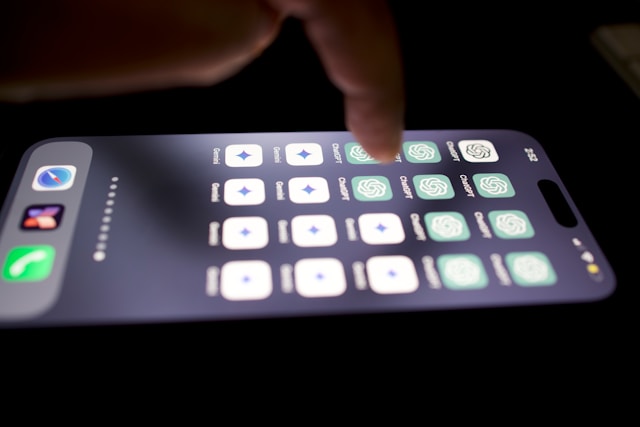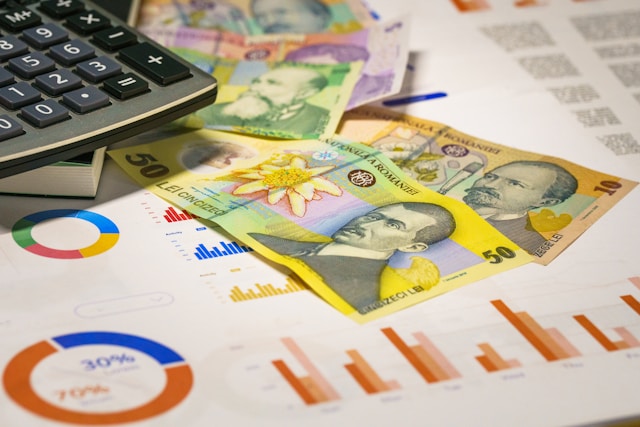Hyperautomation in Banking & Financial Services
Harnessing NuMantra’s hyperautomation cloud-native platform, organizations are transforming finance with a blend of RPA, Process Mining, Machine Learning, NLP, and Business Intelligence. This integration not only automates and refines complex processes but also empowers teams to do more, streamlines data integration, and fosters a secure financial environment geared up for the future.
What is Hyperautomation in Finance?
Future of Hyperautomation in in Finance

AI-Driven Advancements
The future of hyperautomation in finance is poised to be increasingly dominated by AI and machine learning. Financial institutions are expected to employ these sophisticated technologies to sift through extensive data, enhancing their predictive analytics capabilities.
This will lead to more precise forecasting, nuanced risk assessment, and custom-tailored financial advice. The overall effect is set to transform conventional banking into a far more personalized and predictive service, aligning closely with individual customer needs and market dynamics.

Integration with Blockchain to Transform Finance Operations
The integration of blockchain technology in hyperautomation frameworks for the finance sector is anticipated to revolutionize how transactions are secured and made transparent. Blockchain’s distinct characteristics, such as immutability and decentralization, when merged with the efficiency of hyperautomation, are likely to enhance trust and reduce instances of fraud significantly.
Additionally, this could lead to more streamlined and efficient processes in areas such as loan approvals, asset management, and compliance reporting, thereby reshaping the operational landscape of financial services. This will mark a significant leap forward.

Improving Customer Experience
Advanced AI-powered tools, like chatbots and virtual assistants, are at the forefront of this change. They are designed to offer interactive, responsive services catering to real-time customer needs. This technological leap is expected to enhance customer satisfaction, significantly making financial services more user-friendly.
Furthermore, it will enable financial institutions to simplify the presentation and accessibility of complex financial products, making them more understandable and appealing to a broader customer base. This approach represents a critical shift towards a more customer-centric financial services industry.
Benefits of Hyperautomation in Finance
Enhanced Accuracy and Data Analysis
Hyperautomation integrates Machine Learning (ML) and Artificial Intelligence (AI) to improve accuracy in data handling. It also employs Robotic Process Automation (RPA) to scrape and capture data from various applications and utilizes sophisticated algorithms to validate and predict outcomes, ensuring higher data accuracy and fit.
Increased Responsiveness
By capturing and analyzing data from diverse sources, including social media, hyperautomation allows financial entities to adapt and pivot to market changes quickly. Powered by ML models, sentiment analysis provides insights into customer opinions, enabling organizations to respond proactively to customer needs and dynamic trends.
Cost Reduction
Hyperautomation helps identify and analyze process bottlenecks, leading to more efficient operations and cost savings. It combines various process inputs to derive optimal performance measures, helping in cost-effective decision-making.
Resource Optimization
The approach optimizes resources by automating complex business processes using cognitive automation. Hyperautomation streamlines tasks such as data extraction from documents and loading them into ERP systems, reducing the need for manual intervention and freeing up resources for more strategic tasks.
Improved Process Insights
Hyperautomation enhances process insights by enabling discovery using system logs and predictive analysis through ML/AI. It fine-tunes processes and automates them with computer vision, improving process efficiency and reducing redundancies.
Scalability and Integration
Hyperautomation allows financial institutions to scale up their operations effortlessly by integrating various automation tools like RPA, ML/AI, and analytics. This scalability ensures that financial institutions can handle increasing volumes of data and complex processes without compromising efficiency or accuracy.
Process of Hyperautomation in Finance
Here’s how companies can achieve hyperautomation:
Integrating Advanced Technologies
Companies must integrate a range of advanced technologies, including RPA, Artificial Intelligence (AI), Machine Learning (ML), Natural Language Processing (NLP), and Optical Character Recognition (OCR). This integration is essential for enhancing the capabilities and intelligence of hyperautomation systems.
NuMantra offers all these technologies and tools under the same umbrella, significantly reducing the integration and implementation time. In addition, organizations save a considerable amount of time invested in coordinating with multiple service providers.
Process mining
This is crucial in hyperautomation as it helps identify and analyze inefficiencies and bottlenecks in current financial processes. This technology maps out workflows to pinpoint areas for improvement and automation. It enables businesses to understand and optimize existing processes before applying automation tools like RPA, AI, and ML.
Implementing RPA
RPA should be utilized for automating routine and repetitive tasks. Once programmed, it can handle basic, rule-based tasks without any breaks. This can help pave the way for more complex automation processes in the financial ecosystem.
Leveraging AI and ML for Process Automation
AI and ML are used explicitly in hyperautomation for continuous learning with data collected in automation processes. This approach dynamically updates models, improving automation quality and making necessary adjustments. It also involves reusing learning models and ensuring the security of model privacy, thereby delivering more accurate outcomes.
How Hyperautomation in Finance Works?
RPA (Robotic Process Automation)
In finance, RPA acts as the backbone of hyperautomation. It automates mundane, repetitive tasks like data entry and transaction processing. It reduces the need for human intervention for more complex activities, enhancing efficiency and reducing the likelihood of errors in financial operations.
Process Mining
Process Mining maps out key financial workflows. It identifies inefficiencies, bottlenecks, and opportunities for automation within existing processes. This technology provides a clear understanding of how financial operations function, paving the way for targeted and effective automation strategies.
ML/AI (Machine Learning/Artificial Intelligence)
ML and AI are integral to hyperautomation in finance. They analyze vast amounts of data to uncover new information, predict trends, and inform decision-making. These technologies enable advanced risk assessment, fraud detection, and provide personalized financial recommendations.
BI & Analytics (Business Intelligence and Analytics)
BI and analytics tools in hyperautomation extract valuable insights from large data sets. They help visualize financial trends, monitor key performance indicators, and make data-driven decisions. This aspect of hyperautomation is crucial for understanding market dynamics and optimizing financial strategies.
Integration and Workflow Automation
Hyperautomation integrates diverse technologies into a cohesive system. This integration automates complex workflows, ensuring seamless transitions between different stages of financial processes. It enhances overall operational agility and responsiveness in the financial sector.
Continuous Improvement and Adaptation
A key feature of hyperautomation in finance is its continuous learning and adaptation ability. The system evolves by learning from ongoing operations, adapting to new data, and changing market conditions. This ensures that financial processes remain efficient, compliant, and aligned with business objectives over time.
Use Cases of Hyperautomation in Finance
- Invoice Processing: RPA is used to automate invoice processing, a critical finance task. This automation can include various aspects of handling invoices, such as validation, matching, and recording for payment processing.
- Account Reconciliation: RPA automates the comparison of account balances and transactions between different financial systems or ledgers.
- Customer Onboarding: It also streamlines customer onboarding processes. This includes rapidly verifying customer identity documents and managing the Know Your Customer (KYC) process.
- Foreign Exchange Payments: This can involve converting and transferring currencies, managing exchange rates, and ensuring compliance with international financial regulations.
- Automating Account Openings: RPA facilitates the automation of account-opening processes in financial institutions. This includes collecting customer information, performing necessary checks, and setting up new accounts in the financial systems.
- Loan Application Processing: RPA is utilized to automate various steps in loan application processing, such as data extraction from applications, verification of documents, and assessment of creditworthiness.
- Credit Card Processing: RPA also helps in credit card processing tasks, such as processing credit card applications, managing customer credit card accounts, and handling transactions and billing.
- Automated Call Center Operations: RPA can automate certain call center operations in the finance industry, enhancing efficiency and customer service capabilities.
- Identify Improvement Areas: Process mining identifies areas for improvement in business processes, which RPA can target for automation.
- Measure Data Variations Across Functions: It measures data variations across different business functions, allowing RPA to address these variations more effectively.
- Detect Process Deviations: Process mining detects major process deviations, which can be corrected using RPA-driven automation.
- Enhance Process Insights: The combination provides deeper insights into processes, enabling more informed decisions about where to apply RPA for maximum effect.
- Monitor Process Performance and ROI: Process mining and RPA together monitor process performance and ROI, ensuring continuous improvement in both areas.
- Increase Process Accuracy: The synergy increases process accuracy by providing end-to-end visibility into operations, allowing RPA to function more effectively.
- Automating Routine Tasks: NuMantra’s platform provides the ability to employ AI and ML tools like LLM (Large Language Models) to accurately extract data and automate routine tasks such as answering customer queries and scanning candidate profiles, enhancing operational efficiency.
- Transforming Customer Relationship: The platform relies on AI to personalize messages and elevate the Customer Experience (CX) through virtual assistants like Chat GPT4, thus improving customer engagement.
- Improving Productivity: By automating business processes that were previously executed manually, NuMantra’s AI and ML engine frees up employees to work on high-value tasks, thereby boosting productivity.
- Cybersecurity Enhancements: NuMantra’s ML-driven models proactively detect system vulnerabilities and monitor online threats, helping prevent data breaches and enhance cybersecurity in financial organizations.
- Personalized Financial Advice: Using NuMantra’s AI and ML algorithms, banks and financial institutions can provide personalized financial advice to their clients.
- Data Integration and Management: NuMantra aggregates data from multiple sources, including CRM and supply chain systems, and stores it in centralized data warehouses. This approach allows for efficient data management and accessibility.
- Data Analysis and Visualization: The platform uses BI tools for data mining and analysis to uncover patterns and outliers. The results are then visualized using charts and graphs on BI dashboards, providing easy-to-understand, real-time insights.
- Improving Decision Making: By providing relevant and timely data insights, NuMantra’s BI & Analytics enable organizations to make informed decisions that can lead to business success.
- Customer Satisfaction: The tools help organizations understand their customer’s needs and address their concerns, leveraging customer feedback to improve customer service or identify new business leads.
- Enhanced Business Productivity: Companies using NuMantra’s BI & Analytics can implement more agile business processes while reducing costs, thereby achieving higher business productivity.
- Future of BI & Analytics: NuMantra aims to make BI and analytics module more collaborative, integrating with systems like CRM to simplify data processes and extract more relevant business insights.
Case Studies of Hyperautomation in Finance
Transforming Loan Application Processing with Advanced Hyperautomation
Explore the transformative impact of hyperautomation in loan application processing. By integrating Optical Character Recognition (OCR) and Anticipatory Process Mining (APM), NuMantra enhances data handling, accuracy, and processing speed, significantly improving loan dispensation rates. This modernization eliminated manual errors and inefficiencies, improving customer satisfaction and operational efficiency.
Redefining Compliance in Financial Services with Hyperautomation
Discover how NuMantra revolutionized compliance in financial services. Employing a hyperautomation solution with large language models and RPA, the process achieved a 60% increase in compliance rates, tackling issues like data integrity and human errors and enhancing scalability and throughput.
Elevating Insurance Operations with Hyperautomation
Deconstruct NuMantra’s success in transforming insurance processes. Their hyperautomation solution, integrating process mining, RPA, machine learning, AI, and analytics, enabled a leading insurance company to overcome operational challenges, boosting efficiency and driving business growth.
Examples of Hyperautomation in Finance

Automated Loan Processing
Hyperautomation streamlines the loan approval process. Using AI and ML algorithms, financial institutions can quickly analyze applicants’ financial data, credit history, and risk factors to make quicker, more accurate loan decisions.

Real-time Fraud Detection
Financial institutions leverage hyperautomation for real-time fraud detection. AI algorithms analyze transaction patterns and flag anomalies that may indicate fraudulent activity, significantly improving the security of financial dealings.

Regulatory Compliance Automation
Hyperautomation tools automate the process of monitoring and reporting for regulatory compliance. This ensures financial institutions adhere to changing regulations efficiently, reducing the risk of non-compliance penalties.
Frequently Asked Questions
Hyperautomation in financial analysis refers to integrating advanced technologies like RPA, AI, and data analytics to streamline financial processes. It enables organizations to automate tasks, analyze data, and make data-driven decisions, improving accuracy, efficiency, and agility in financial operations.
Banks use Hyperautomation to streamline their operations by automating routine tasks such as data entry, document processing, and customer service inquiries. They leverage AI, RPA, and analytics to improve efficiency, reduce errors, enhance customer experiences, and comply with regulatory requirements. This enables banks to operate more cost-effectively and offer better services to their customers.
Hyperautomation can assist accountants by automating repetitive tasks like data entry, invoice processing, and report generation. It enables them to focus on higher-value activities such as financial analysis, strategy development, and client advisory services. By harnessing technologies like RPA and AI, accountants can increase productivity, reduce errors, and provide more valuable insights to clients, ultimately enhancing their professional roles.
The success of Hyperautomation relies on several key factors. It requires a clear understanding of business processes, the integration of advanced technologies like RPA, AI, and data analytics, a commitment to continuous improvement, and strong leadership support. Effective communication and collaboration across teams are also essential for successful implementation. Additionally, adapting to changing business needs and staying updated with the latest technology trends are crucial for sustained success in Hyperautomation.
Hyperautomation is not a single type of software but a capability achieved by combining various software and technologies. It typically includes Robotic Process Automation (RPA) software, Artificial Intelligence (AI) and Machine Learning (ML) tools, data analytics software, and more. These technologies work seamlessly on a single platform to automate and optimize complex business processes.
Hyperautomation technique refer to advanced technologies and methodologies used to automate and optimize business processes to a high degree. These techniques often include Robotic Process Automation (RPA), Artificial Intelligence (AI), Machine Learning (ML), Process Mining, and data analytics. The goal is to create end-to-end automation solutions that improve organizational efficiency and decision-making.
